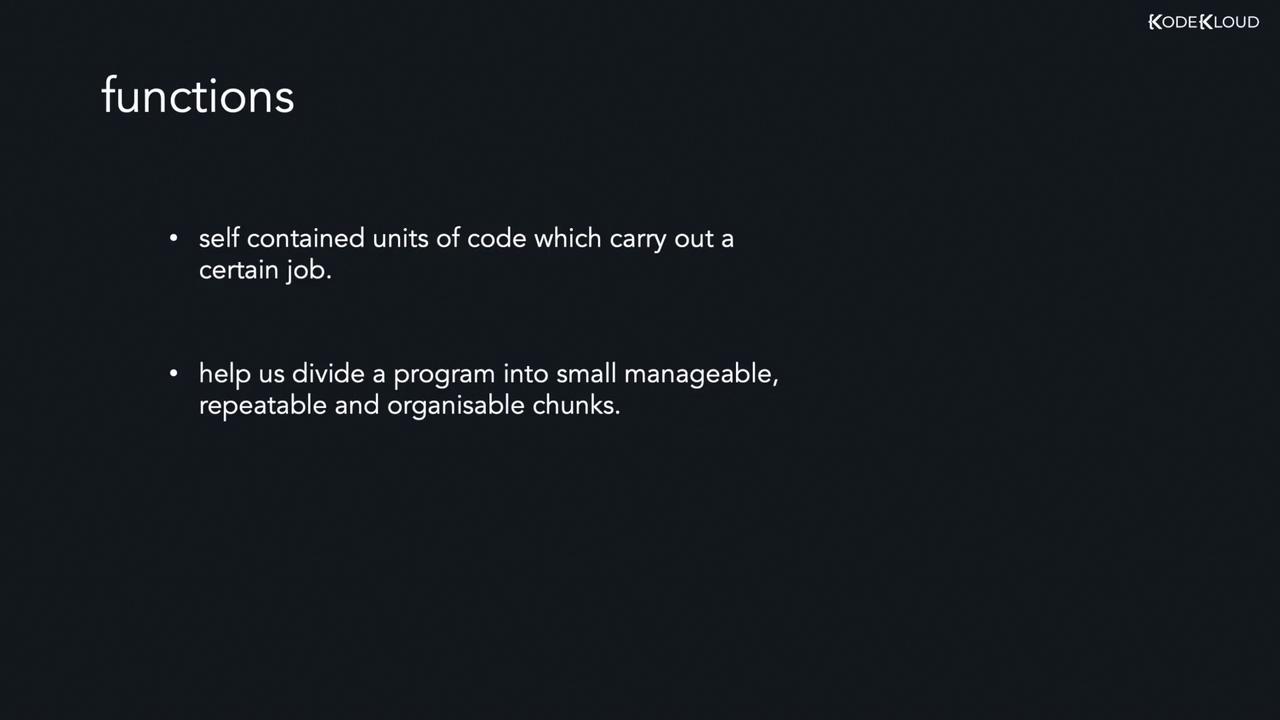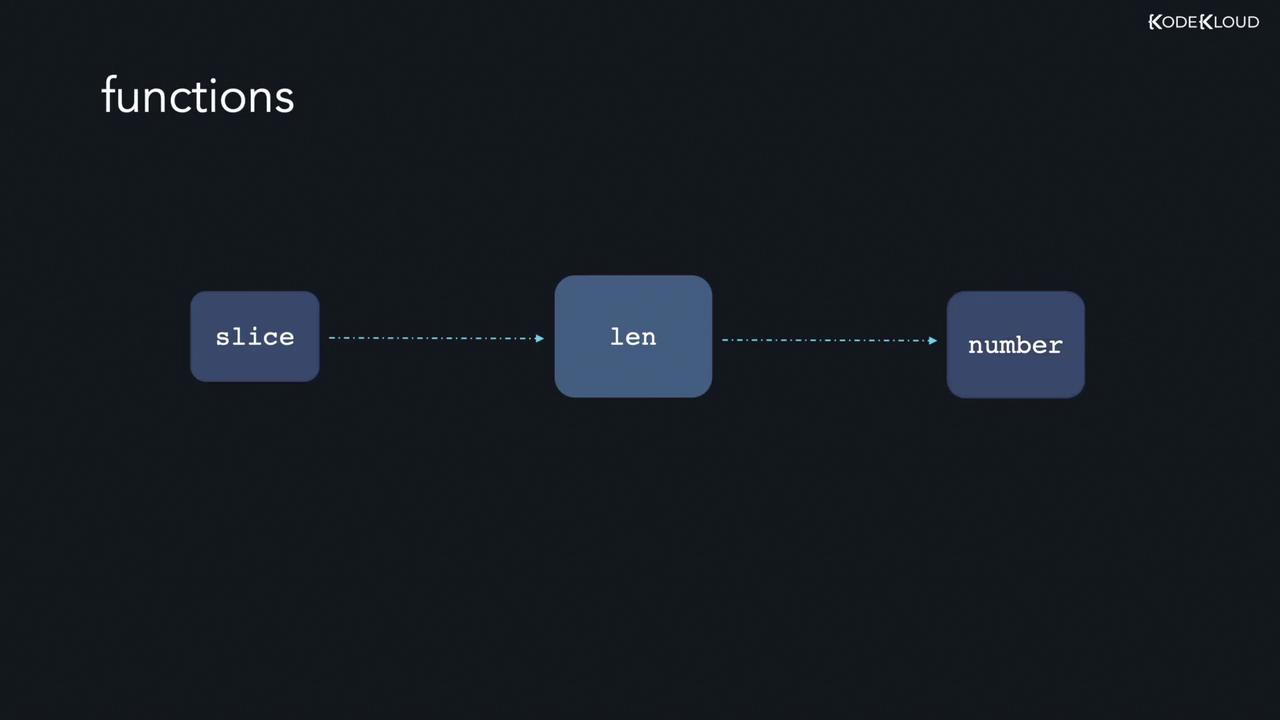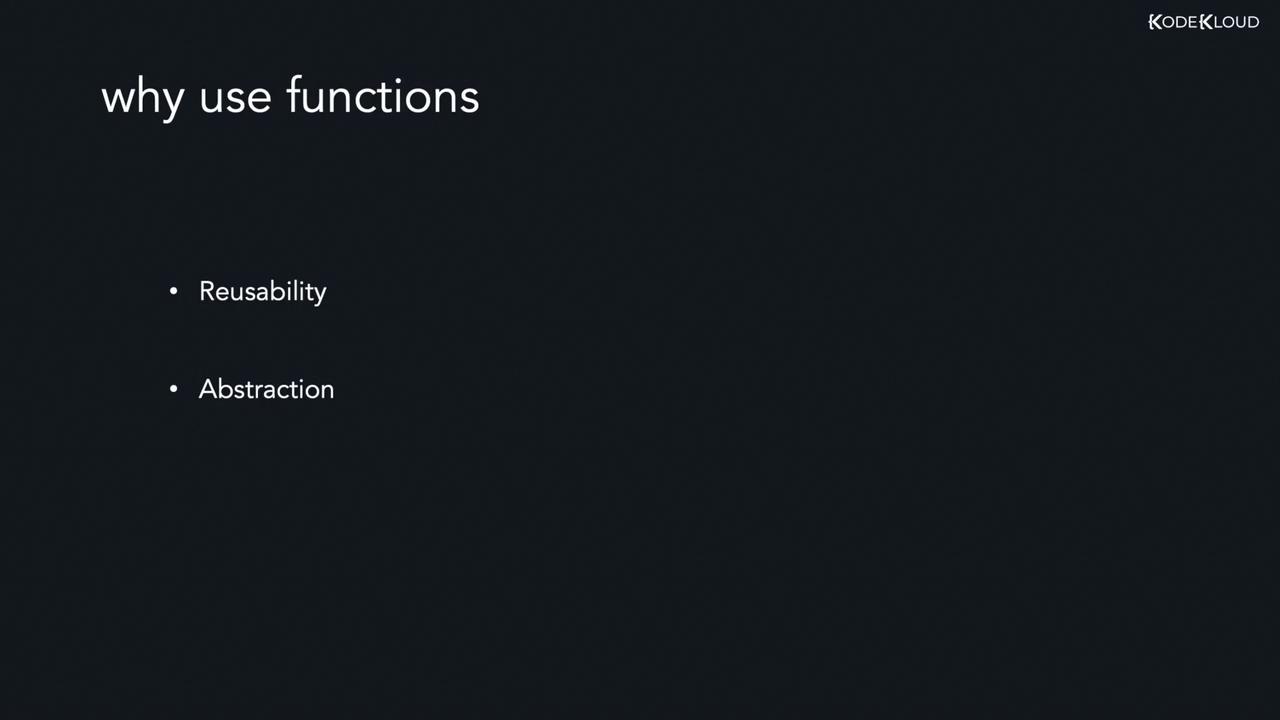Golang
Using Functions
Introduction
In this lesson, we explore functions in Go—a fundamental element in programming that plays a pivotal role in building clean, maintainable, and scalable code. Functions in Go allow you to structure your programs into reusable blocks of code, making it easier to debug and enhance your applications over time.
Functions are self-contained units of logic that perform specific tasks. By encapsulating operations within a function, you can divide your program into manageable and repeatable segments instead of maintaining one large block of code.

At a higher level of abstraction, a function operates by taking one or more inputs, processing them, and then returning an output. For instance, consider the built-in length function in Go, which calculates the size of a slice, array, or map. In this case, the input is the data structure (such as a slice), and the output is the number of elements within it.

Why Use Functions?
The main benefits of using functions include:
- Reusability: Write a function once and call it multiple times throughout your project.
- Abstraction: Hide complex implementation details, allowing you to focus on what the function does rather than how it does it.
These advantages lead to cleaner, more modular code, allowing developers to build applications that are not only easier to understand but also simpler to maintain.

In the upcoming lessons, we will dive deeper into the various aspects of function declarations, including:
| Function Type | Description | Example Use Case |
|---|---|---|
| Standard Functions | Basic functions that perform defined tasks | Code organization and reusability |
| Higher-Order Functions | Functions that can accept other functions as parameters | Functional programming patterns |
| Variadic Functions | Functions that accept a variable number of arguments | Flexible parameter handling |
| Anonymous Functions | Functions defined without a name | Inline operations and closures |
Each section will include practical demonstrations to help illustrate how these function types can be implemented and utilized effectively in your Go projects.
Stay tuned as we demonstrate the properties and advantages of functions in action, bolstering your understanding and mastery of Go programming.
Watch Video
Watch video content